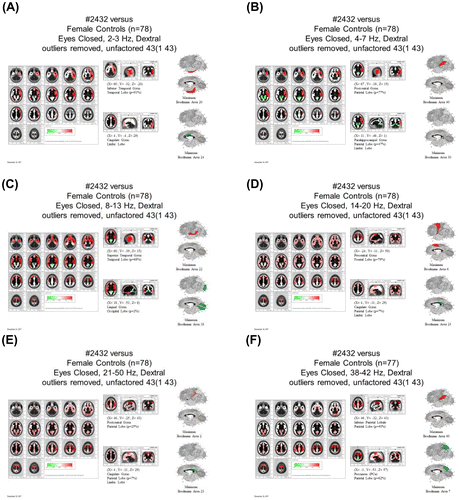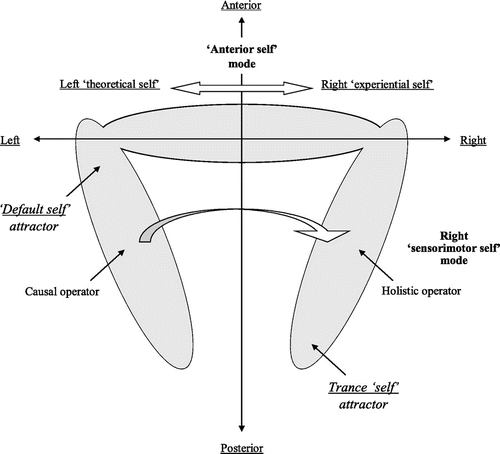Figures & data
Figure 1. Ordinary (OSC) vs. altered (ASC) states of consciousness as a function of arousal/absorption.
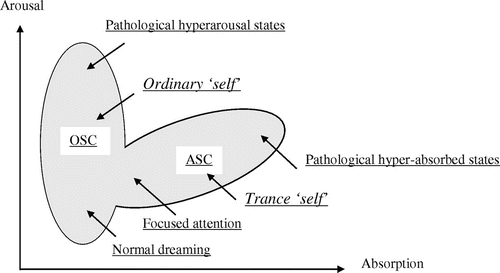
Table 1. EEG frequency bands and sub-bands as defined in this study
Figure 2. Centroid analysis. (A) Centroid analysis of the subject in the trance state (red) vs. 80 normal dextral female controls (blue). (B) Discriminant score comparison of the subject in the trance state (red) vs. 80 normal dextral female controls (blue) and 84 females with depression (yellow). (C) Discriminant score comparison of the subject in the trance state (red) vs. 80 normal dextral female controls (blue) and 19 females with mania (yellow). (D) Discriminant score comparison of the subject in the trance state (red) vs. 80 normal dextral female controls (blue) and 18 females with schizophrenia (yellow).
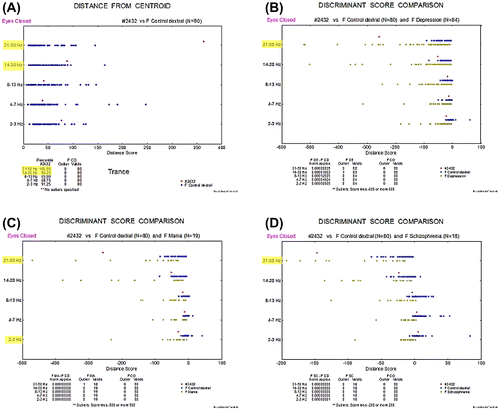
Figure 3. Quantitative EEG mapping of the subject in the trance state (left 3 × 3 maps) vs. 78 normal dextral female controls (right 3 × 3 maps): (A) Low beta band, EC condition. (B) High beta band, EC condition. (C) The subject in the trance state (left 3 × 3 maps) vs. in her normal state (right 3 × 3 maps): high beta band, EC condition.
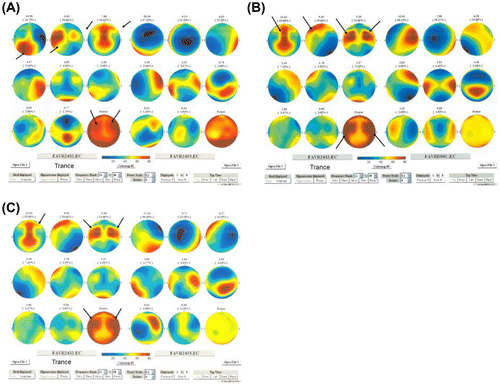
Figure 4. LORETA power source distribution of the subject in the normal state vs. 78 normal dextral female controls, EC condition: (A) Delta band; (B) Theta band; (C) Alpha band; (D) Low beta band; (E) High beta band; (F) Gamma band.
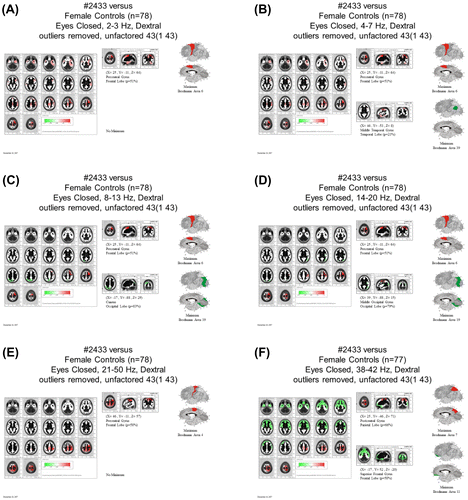
Figure 5. LORETA power source distribution of the subject in the trance state vs. 78 normal dextral female controls, EC condition: (A) Delta band; (B) Theta band; (C) Alpha band; (D) Low beta band; (E) High beta band; (F) Gamma band.
